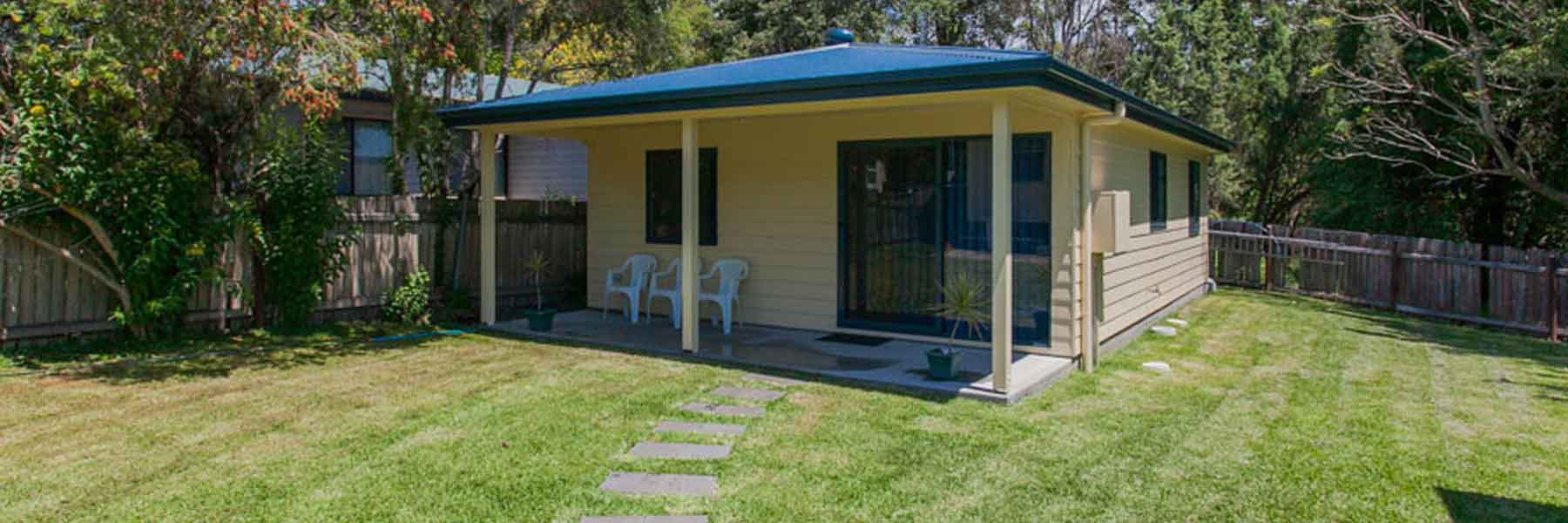Home > Home Loans > How Do Home Loans Work?
How Do Home Loans Work?
Everything you need to know about how home loans work in preparation for buying your first property.
Author
Savvy Editorial TeamFact checked
About 67% of all Australians own a home, according to 2021 Census data. This suggests the majority of Aussies have had to navigate the home loan maze at some stage in their lives. It can sometimes be a challenge to work out how to find the best home loan and what all the small print means.
If you’re thinking of buying or building a house for the first time, you’ll need to know exactly how home loans work, which you can find out here with Savvy. Delve into the lending process, explore tips about how to get the best home loan and find out how to compare home loans right here today.
What are home loans and how do they work?
A home loan is a legal document where a bank or lender loans money to a borrower in exchange for taking the Certificate of Title of the property as security. In simple terms, it is a loan used to buy a property, whether that be a house, unit, apartment, flat or vacant piece of land. The borrower agrees to pay interest on the money which has been loaned and the finance deal is gradually repaid until all the principal and interest has been covered, at which time the mortgage is discharged and the loan terminated.
There are several basic elements to all home loans:
- the amount you borrow, known as the ‘principal’
- the interest charged
- the deposit you pay
- fees or charges applied
The principal is the total amount of money you borrow to buy your property. How much you can borrow will depend on your income, household expenditure and the size of your deposit. Lenders traditionally require 20% of the agreed value of your property, so they’re prepared to loan 80% of the house value. However, if you don’t have a sufficient deposit, some lenders are willing to offer loans with a high loan-to-value ratio (LVR).
Interest is charged daily at a set percentage per annum (p.a.). Therefore, a 2% p.a. interest rate loan means you are charged 2% interest on the principal sum you’ve borrowed (per year). A 2% interest rate means for every $100 you borrow, you’ll pay back $102 to your lender (each year, for as long as the loan is outstanding.) The number of years you have to pay back your loan is known as the ‘term’ of the loan.
To calculate how much interest you’ll pay per month, use the formula:
(Principal amount x interest rate) ÷ number days in a year = amount per day, and multiply this daily charge by 30 (or 31) to calculate monthly interest.
What types of home loans are available?
There are two main types of home loan available in Australia: one with a fixed interest rate and the other a variable rate. A third option – a split rate home loan – is a combination of the two.
Fixed interest rate loans
There are two elements which are set in stone in fixed rate loans: the interest rate, which remains the same for the duration of the loan, and the time that interest rate applies for, which is known as the term of the fixed period. As such, fixed rate loans have a fixed interest rate for a fixed term.
The home loan can’t be changed or broken without expensive break fees (also known as early exit fees) being applied, so although such loans are popular because they frequently offer a low interest rate, they are also rigid in structure and don’t allow for your mortgage to be paid off more quickly or offset with other savings without penalties being applied.
Variable interest rate loans
These are by far the most popular home loans in Australia. The interest rate on the loan is not fixed at a particular rate, but is variable according to interest rates set by individual lenders which change over time.
The lenders’ interest rates, in turn, are influenced by (but not dictated by) the daily cash interest rate, which is set by the Reserve Bank of Australia (RBA). This is Australia’s official interest rate which the big banks use to lend money to each other and internationally. If the RBA raises interest rates, the lenders usually follow by increasing their interest rates too.
Repayment flexibility is far greater on these loans, as they come without any penalties for additional or early repayments in the same way fixed rate loans do. They’re also more likely to come with features such as offset accounts to help you pay down your loan faster.
Split rate loans
A split rate loan is one which is split into two portions, one of which has a fixed rate and the other a variable interest rate. These loans combine the best of both worlds, giving you the flexibility to make additional repayments on the variable portion of the loan, and to pay that portion off more quickly, but with the security of protection from increasing interest rates offered by the fixed portion of the loan.
However, if you get the split wrong, you may end up paying a significant amount more than you otherwise would’ve. For instance, fixing a significant portion of your home loan at an interest peak and seeing rates fall soon after can block you from truly capitalising on interest decreases. Also, with two separate loan accounts, you may end up having to pay double the account-keeping and maintenance fees.
What fees are applied to loans?
Lenders charge many different fees on home loans. However, many lenders are willing to reduce their fees or waive them altogether. Some of the costs you’re likely to encounter include:
- Application fee (also known as establishment, start-up or set-up fee.) This is a one-time fee charged at the beginning of your home loan to pay for the establishment and documentation of your loan. Typically, it’s around $600, but can range from $100 to over $1,000.
- Ongoing administration fees. Also called monthly servicing fees, package fees, annual fees. Again, these vary from lender to lender, but they generally range from $300 to $450 per year.
- Property valuation fee. Your lender will want to know exactly how much a valuer thinks your property is worth. Expect to pay between $100 and $300 for the lender to get your house valued.
- Conveyancing fee. The process of transferring legal title from a current property owner to a new purchaser is known as conveyancing, and a conveyancer or solicitor will charge between $600 and $1,500 to do the legal work of transferring ownership.
- Mortgage registration fee. Your mortgage has to be registered with your state or territory government lands titles office. Fees range from around $120 in VIC to $192 in QLD.
- Title search fee. A title search has to be performed each time a parcel of land (known as a ‘title’) changes hand. Search fees are around $50.
How can I qualify for a home loan?
First of all, to qualify for a home loan in Australia you need to be:
- over the age of 18
- a citizen or permanent resident of Australia
- currently holding stable employment and a regular income
If you satisfy these basic conditions, the next area to consider is your borrowing power. This is the amount of money you have available to use to pay back a home loan after income tax, other debts and basic living expenses have been subtracted from your income. In most cases, you'll be required to submit a 20% deposit, meaning your borrowing power will represent 80% of the purchase price of your property. You can use Savvy’s borrowing power calculator to tell you how much you may be able to afford to borrow.
The golden 30% rule
A golden rule to remember is that most lenders will allow you to make repayments equal to 30% of your gross (before tax) pay per week. In other words, around of a third of your weekly gross pay should be used to pay your mortgage. This does vary from lender to lender – so some may only allow 27% and others 33%, but a third is a good general yardstick to use to work out your loan repayment capacity.
The home loan application process
Save up for your deposit
It takes time and discipline to save up a deposit for your first home loan, but the result will be worth it when you finally get the keys to your own home. One way to make sure you save regularly is to decide how much you can afford to allocate to your deposit savings each pay and set up an automatic transfer from the account where your wages are deposited, into your savings account.
This way you’ll save a set amount each fortnight and will be able to watch your deposit grow!
Work out how much you’re able to borrow
Once you know how much deposit you’ll have, you’ll be able to work out how much you’re able to borrow. Remember that your deposit should be 20% of the total cost of the property you wish to buy. Use Savvy’s loan repayments calculator to work out your preferred loan’s weekly, fortnightly or monthly repayments. The size of your repayments will depend on the number of years you take out the loan for and how much you can afford to repay.
You should allocate approximately 30% of your after-tax income to pay off your loan.
Compare and choose your loan
There are plenty of aspects to compare between home loans, such as rates, fees, available terms and LVR flexibility, which you can find right here with Savvy. We break down home loan offers from our lending partners so you can make a more confident decision on which loan is best for you.
You can also think about the different loan features you may want – such as an offset account, a redraw option, or the ability to make lump sum repayments.
Prepare your documentation
It's important to know what documents you need for your application. These will vary from lender to lender, but all lenders will want to see:
- proof of your identity – prepare 100 points of ID (passport, driver’s licence, birth certificate)
- details of how much you earn – organise at least three concurrent payslips
- details of your assets (what you own, such as your car, savings or investments)
- what your liabilities are – everything you owe, such as loans
- how much you need to live on – find your utility bills, phone plan and other regular payments you make
Apply online for pre-approval
Once you’ve got your documents in order and decided on the loan you’re after, it’s time to apply to your preferred lender for pre-approval. This will involve the lender looking at your finances and giving you an indication of how much they would be prepared to loan you when you make a full application, remaining valid for three months.
Once you’ve got your conditional approval, it’s time to select your dream home!
Get full loan approval
Once you’ve decided on the property you wish to purchase and signed a purchase contract subject to finance, it’s time to contact your lender again and ask for full loan approval, which may only take a few days. If your loan application is successful, your lender will value the property you want to buy by arranging a valuer to inspect your property and provide an agreed value.
When settlement day arrives, your conveyancer will handle the physical transfer of money to the vendor and transfer the title of the property into your name.
Top tips for maximising your chances of home loan approval
Compare home loans with Savvy
Make sure you get the best home loan deal available by using Savvy to compare lenders and loans. Online lenders offer some of the lowest home loan interest rates available in Australia today, plus many offer low-fee or no-fee loans in addition to the lowest interest rates. Compare lenders until you find the best deal to fit with your borrowing needs.
Increase your deposit size
The bigger the deposit you’re able to offer, the less risk you pose as a borrower and the greater your chances of loan approval. If you’re able to offer more than a 20% deposit, for instance, you’ll be more likely to be approved, potentially at a lower interest rate.
Only apply for what you can afford
Don’t overburden yourself with a loan repayment which is too large and which may cause you difficulty in repaying if interest rates rise. Only apply for a loan you can afford and give yourself some ‘wriggle room’ so that if you do have a variable rate loan and interest rates increase you aren’t subject to mortgage stress.
Budget for other home loan costs
Saving a little extra on top of your deposit is a very good idea, as there may be unforeseen expenses you didn’t anticipate. Added costs such as stamp duty can’t be covered by your home loan, so it’s important to budget for them.
Ensure your documents are correct and in order
When you submit your loan documents, make it as easy as possible for the loan assessor to approve your loan by making sure all your loan documents are correct, readable, and in the right order. The higher the quality of your loan application, the more chance you have of your loan application being approved.
Don’t bombard lenders with applications
Other lenders will be able to see every other loan application you’ve made in the past five years. Multiple loan applications could indicate you’re not a desirable borrower and could affect your chances of approval.
Make sure your credit score is healthy
Get a copy of your credit report before you apply for your loan. You are entitled to one free credit report per year from credit report providers such as Experian, Equifax or Illion. You can contact credit providers to correct any mistakes that may appear in your credit report, and improve your credit rating by paying bills on time, reducing your debt and paying off all your credit cards.
Don’t change jobs or home addresses too often
Lenders could be put off if you have a history of changing jobs or residential addresses too often. They like to see a history of life stability, particularly in terms of your income, as this indicates you are less of a loan risk.
Frequently asked questions about home loans and how they work
Yes – you might’ve heard the terms ‘home loan’ and ‘mortgage’ used in property finance circles and wondered whether they’re the same. They are, with the terms able to be used interchangeably.
If you’re providing a deposit of 20% for a loan of $400,000, you’ll need $80,000 for a deposit. However, some lenders will accept a deposit of less than 20%, and there are other ways of buying a home if you don’t have 20% as a deposit, such as enlisting a guarantor, taking advantage of various state and federal first home owners’ assistance schemes or taking out LMI.
Yes – but as a self-employed person, you’ll need to provide more documentation to a lender. This may include two or more years of tax returns or correspondence from your accountant. If you can’t supply the appropriate tax returns, you may have to apply for a low doc home loan.
Yes – if you’re purchasing your first property and meet eligibility criteria, there are several government assistance packages available. Some schemes are run by the Federal Government, such as the First Home Super Saver Scheme and First Home Loan Deposit Scheme, while others are administered by state governments, such as the First Home Owner Grant scheme. These schemes vary and include:
- relief and concessions from paying stamp duty
- guaranteeing deposits to avoid paying LMI
- lump sum cash grants to assist with the cost of a deposit.
Lenders use a combination of factors to determine your eligibility for a home loan. These include your income, your credit score, assets, debt-to-income ratio and how much deposit you’ve saved up. To be eligible for any home loan you have to be over 18 years old and a permanent resident of Australia, with a stable income.
Lenders Mortgage Insurance (LMI) is an insurance premium that some borrowers have to pay if they aren’t able to provide a deposit of 20%. It’s insurance which protects the lender against default on the loan – in other words, if you’re unable to pay your loan, the lender is covered by the insurance (but the borrower has to pay the premium). It can amount to thousands of dollars.
Yes – you can change your home loan down the track. This is known as refinancing and it’s a good idea to take a look at your mortgage every year or so to make sure you’re still getting the best deal available. Interest rates and home loan packages do change over time and so do family circumstances, so it’s worth returning to Savvy from time to time to compare your current loan. Refinancing can also be used to consolidate other debt, split a loan, remove a guarantor, use your equity to buy an investment property or re-fix your interest rate.
A deposit bond is usually issued by an insurance company and is used instead of cash to pay a deposit when buying a home. This can make it easier for people to buy a property if they don’t have available cash for the deposit. However, not all sellers will accept deposit bonds in place of upfront cash, as they may want to make a property purchase of their own.
Stamp duty is a tax levied by state governments on the purchase of property. Every time you buy a property (be it a house, a unit or vacant land) you will have to pay stamp duty, which is also known as transfer duty (WA) or conveyance duty (ACT). This can amount to thousands of dollars and is a major cost of house purchase, which has to be paid either at settlement (in SA) or within 14 to 60 days of purchase in other states. However, states have different schemes to offer concessions or reductions from paying stamp duty for first homebuyers and in other situations, such as inheritance and divorce.
Yes, home loan pre-approval is a good idea – pre-approval means that a lender has had a look at your personal financial situation and, based on the information provided, has provisionally approved you to borrow up to a certain limit. It isn’t the same as final loan approval; you still have to submit a formal loan application and gain formal approval down the track. However, pre-approval does give you some standing when you make an offer to buy a house, as real estate agents and vendors will see that you are serious about your purchase offer.










